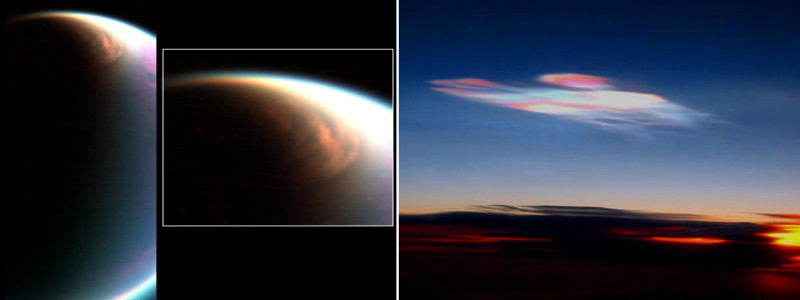The Four Corners region in the southwest United States enjoys a sort of relaxed notoriety. The “four corners” of the Four Corners belong to four of the more tidily quadrilateral states: Utah, Colorado, Arizona and New Mexico. Tourists like to stop by for a quick jaunt, crossing four states off the bucket list in the time it takes to walk a small circle around the sign that denotes the intersection. A few years back, however, the Four Corners region attracted interest of another sort when NASA atmospheric scientists observed what appeared to be a massive cloud of methane hovering there. The cloud was so large that the scientists initially dismissed it as an obvious instrument error, but a recent NASA report has verified that the four corners methane hotspot is both real, and really big. NASA acknowledged the existence of the “methane hotspot” in a research letter published in the journal Geophysical Research Letters on Oct. 9. According to that letter, NASA had been using a satellite-based instrument known as the Scanning Imaging Absorption Spectrometer for Atmospheric Chartography (SCIAMACHY) to monitor methane over the US from 2003 to 2009. SCIAMACHY provided the results that were initially ruled out as instrument error. The readings, however, were consistent across the span of the study, which left NASA hesitant to dismiss them entirely. Revisiting their satellite results led them to attempt to validate them with ground-based testing. NASA tested the methane levels near four corners between 2011 and 2013 and found consistently high levels of atmospheric methane. “Results indicate the largest anomalous [methane] levels viewable from space over the conterminous U.S. are located at the Four Corners region in the Southwest,” according to the NASA research letter. Atmospheric methane levels are important because methane is a very effective greenhouse gas. According to the EPA, methane is more efficient at trapping radiation than CO2. “Pound for pound,” in fact, the letter said. “The comparative impact of [methane] on climate change is over 20 times greater than CO2 over a 100-year period.” So just how large is this mass of heat-trapping methane? According to a separate NASA release, the cloud covers an area of roughly 2,500 square miles or “half the size of Connecticut.” Over the course of each year that SCIAMACHY monitored the region, approximately 600 thousand tons of methane was released into the atmosphere – a figure that is nearly 3.5 times higher than the standard estimate. The research letter lays the blame for the methane hotspot at the feet of natural gas activities around the Four Corners region. The research letter credits conventional gas extraction techniques with the bulk of the emissions, as the methane cloud predates the advent of hydraulic fracturing (commonly known as fracking) in the region. “The methane emissions should not be attributed to fracking, but instead to leaks in natural gas production and processing equipment in New Mexico’s San Juan Basin, which is the most active coalbed methane production area in the country,”said research letter lead author Eric Kort. NASA’s validation of their initial results yielded plenty of food for thought. The unexpected discovery of such a large quantity of methane indicates a need for improved techniques for monitoring and forecasting methane emissions. It also raises questions about the ever-contentious practice of fracking, which has the potential to release significantly more methane into the atmosphere. The Obama Administration outlined their strategy for monitoring methane in the Climate Action Plan in March. The strategy focuses on precisely the issues mentioned above – improving tools to monitor and assess emissions. The verification of the SCIAMACHY results provides encouraging proof of the efficacy of space-based atmospheric monitoring systems. The conclusion of the research letter strikes an optimistic note to that effect. “We have demonstrated that space-based observations of [methane] can be used to identify regions of anomalously large [methane] emissions… it is likely more regions of anomalous emissions could be identified and have their respective emissions quantified from space.”
Methane Hovers Over Four Corners




